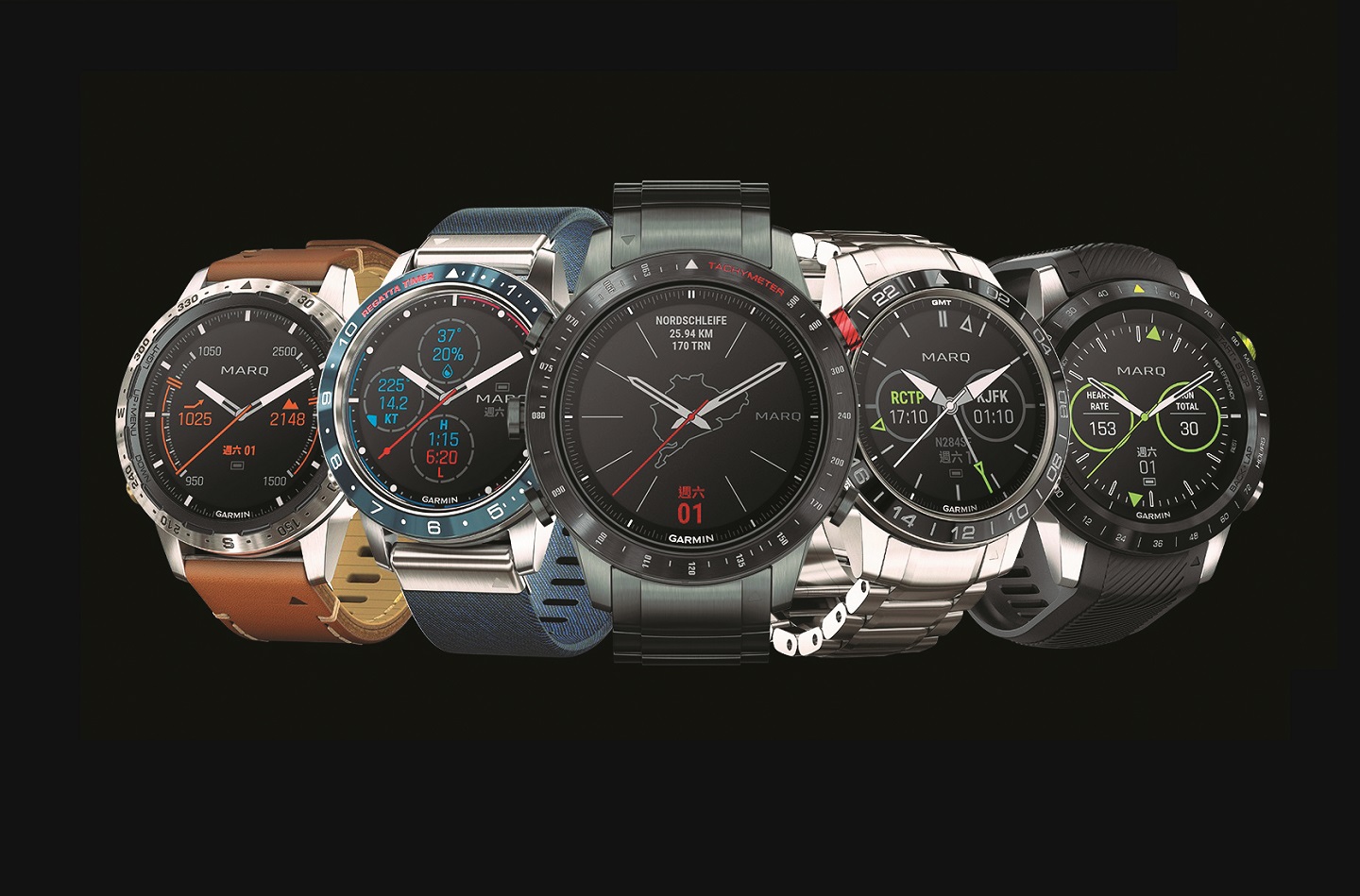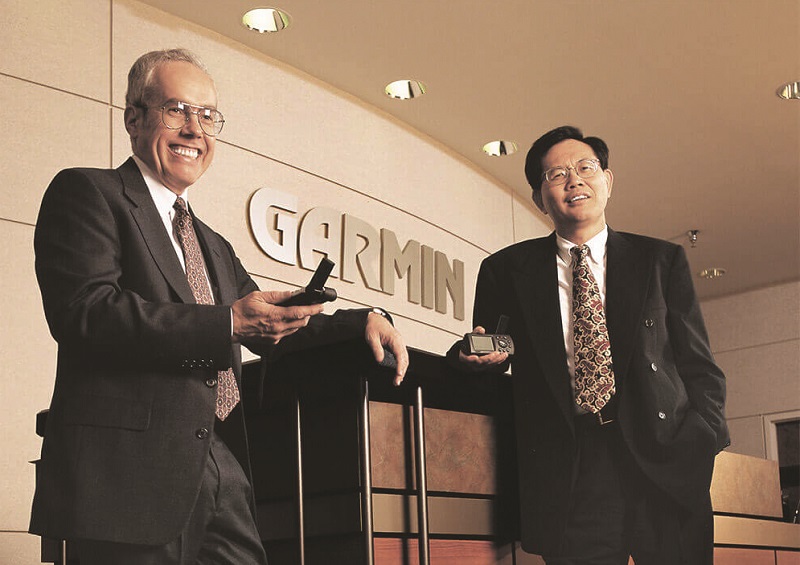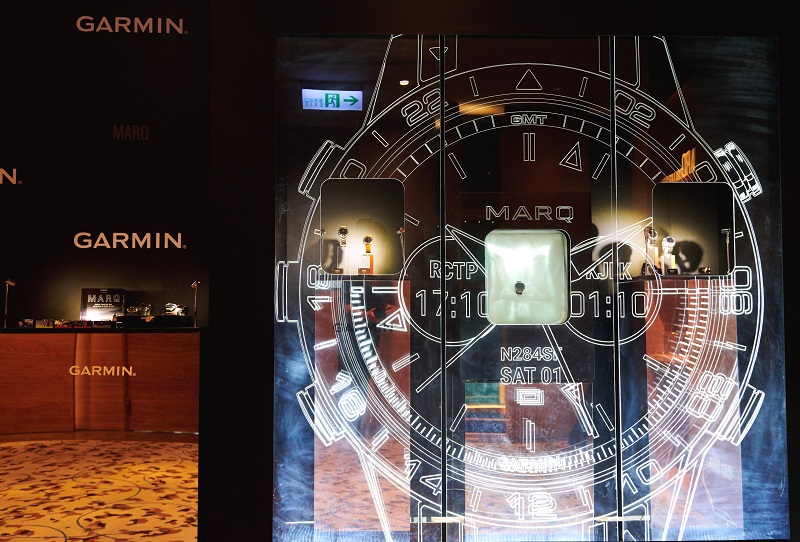
The MARQ series consists of five watches: Aviator, Driver, Captain, Expedition and Athlete (All photos: Garmin)
garmin_founders_gary_and_min_kao.jpg

It is a classic start-up story. Although equipped with reams of data and experience, Burrell and Kao only hired a handful of engineers before launching their first product — a GPS-based navigation unit for boaters called GPS 100 — in about 15 months. Garmin soon grew, from developing a fully integrated system for aircraft, including autopilot and communications, to inventing the first Personal Navigation Device for cars. BMW, Daimler, Honda and Toyota have Garmin to thank for the next-generation, in-dash navigation systems in their luxury flagships today.
However, the traditional GPS unit, which receives signals from satellites that enable it to locate where you are, is a one-way device. It would be useful if one is flying blind in a new town. But in a connected world? That is barely enough. Cue the entry of Garmin Forerunner, which established the brand as an innovator in the wearable market.
The idea of a personal coach that resides on your wrist might make you think it will imbue you with special powers. Who would not think so when it accurately logs distance, speed, heart rate, time, altitude and pace, all of which are paramount metrics for elite athletes? That was not the coolest part yet. Through GPS, new iterations of the Forerunner can “mark” the users’ current location and edit the entry’s name and coordinates so they can return to a certain spot. Plus, the device can upload data to a computer to create a spreadsheet of previous exercise activities for analysis.
Run-tracking technology has travelled light years ahead in the past few decades. But with the advent of all-in-one smartphones, which offer free apps that range from simple calorie counters and heart-rate monitors to complex metabolic calculations, one can almost hear the sound of dirt being shovelled onto the grave of the portable, single-use GPS unit. So, how does Garmin, whose business grew from just a headquarters with two chairs to a network of 65 offices in 37 countries with US$3.38 billion in sales last year, keep up with the exacting technological pace?
By MARQ-ing a new territory in luxury fitness.
ON YOUR MARQ, GET SET, GO
The value of a premium product is no longer measured just by its exclusivity but the extent of the expertise behind it that implicates future crafts. Acutely aware of its capabilities in GPS for more than 30 years, Garmin strengthened its foothold in the aviation, automotive, marine and fitness industries, and the outdoors by launching a collection of lifestyle-inspired smart tool watches called the MARQ series. Priced between US$1,500 (RM6,300) and US$2,500 (RM10,500), all five watches — namely Aviator, Driver, Captain, Expedition and Athlete — incorporate the refinement users expect in high-end timepieces, placing them well above the company’s current most expensive range, the Fenix.
marq_inside.jpg

Luxury smartwatches are not novelties. In fact, Swiss watchmakers have already introduced both digital and mechanical modules that can be attached to the lugs of their watches.
Garmin’s MARQ series can be branded, perhaps, as “smart luxury” — think of it as a well-tailored suit that flatters you, but in a stealthy yet functional way. Still, one should not lump the collection with other smartwatches out there as each timepiece is painstakingly crafted to cater for a niche group of zealous enthusiasts. For example, the Aviator, inspired by the “swept wing” design, with features such as the Next Generation Weather Radar system and airport information, is comfortable on the wrist for in-flight wear and outside the cockpit. Its GMT bezel gives pilots quick access to two other time zones in addition to the current time.
The Driver emulates the design smarts of race cars by treating its bracelet with carbon grey “diamond- like carbon” coating, which can withstand the high vibration environment of racing. Pre-loaded with more than 250 famous race tracks around the world, the Driver can also keep tabs on your auto lap splits, live delta time and average speed.
Seafarers need not worry about ruining their smartwatches anymore as the Captain’s jacquard weave strap, woven in southern France and laser cut later, is designed for exceptional performance in salt water environments. A regatta time bezel, coastal charts, tack assist and port conditions watch face keep mariners up to speed. And one can keep track of the wind speed, current, temperature and tide by clicking on the side of the watch.
Created with the explorer in mind, the Expedition is compatible with the inReach Mini satellite communicator and is equipped with topographic mapping, a built-in altimeter and barometer. An avid hiker would be charmed by the ClimbPro programme, which provides real-time information on current and upcoming climbs such as gradient, distance and elevation gain. The strap, crafted from vegetable tanned Italian vacchetta leather and debossed on the back, allows for good flexibility while avoiding fraying over time.
captain.jpg

With the explosion of fitness trackers in the market, the most relatable model of the MARQ series has to be the Athlete. The first generation of such a device was rudimentary and clunky in design, but Garmin’s latest — the pinnacle of everything the brand has done in the GPS-guided industry — consists of some of the niftiest features packed in a stylish titanium casing. Apps that measure activity performances are a given, but what makes the Athlete stand out is that you will get a better view of the behaviours and bad habits unbeknown to you.
A hands-on experience at the MARQ media launch in Taipei, Taiwan, revealed that the 46mm device with tactile buttons and domed sapphire crystal face handles all the heavy lifting of workout planning for you. The inclusion of the VO2 max and recovery time scale on the bezel means a snapshot of your performance is always visible with every glance at the wrist. Whether you are hiking, weightlifting, rowing, swimming, golfing or even training for a marathon, the Athlete has a setting for almost every sport imaginable and a plethora of biometrics to gain additional insights into your body type and competitive goals.
The most thrilling feature of the watch is probably the pulse oximeter (or Pulse Ox in Garmin lingo), which closely monitors your oxygen absorption and blood oxygen saturation. This function is particularly useful to analyse how well your body acclimatises to high altitudes, formulate fitness goals according to training intensity and even develop an understanding of your sleep history by recording data on sleep time, rapid eye movement sleep periods and in-sleep movements. Just bear in mind that the objectivity of a fitness tracker can seem merciless and the MARQ does not treat an activity lapse with tactful silence.
The unremitting march of technology has brought us to a state where software and machines are outthinking us in more areas. You can measure your activities all day, but what can you do with the wealth of data? Instead of steering by intuition, a revolutionary gadget like Garmin fills in the blind spots in your field of vision — the endurance threshold you cannot see or the creeping physical barriers that have been hindering your progress — and replace the vagaries of guesswork with something more concrete and constructive. And in style too, especially with the MARQ.
“Most of us who work at Garmin are trained as engineers, including myself. As a software engineer, I had the opportunity to influence the designs of the products. Throughout my career, I’ve seen a few disruptions related to geo-political or technological trends that come and go. But one thing I’ve learned is that you need to focus on creating a good product and not get intimidated. Compared with other smartwatch brands, we offer more options with purpose-built features that cater for active lifestyle. We are also a very diversified company,” says Garmin president and CEO Cliff Pemble, who was the company’s sixth employee when he joined in 1989.
Relying on machines may be a logical outcome of our obsession with efficiency and quantifying our daily activities is just a way of delivering a better quality of life. Unravelling the realm of mysterious human behaviours through rational solutions and numbers is a dream of engineers. No wonder Garmin keeps breaking frontiers at every step of the way.
This article first appeared on September 9, 2019 in The Edge Malaysia.


